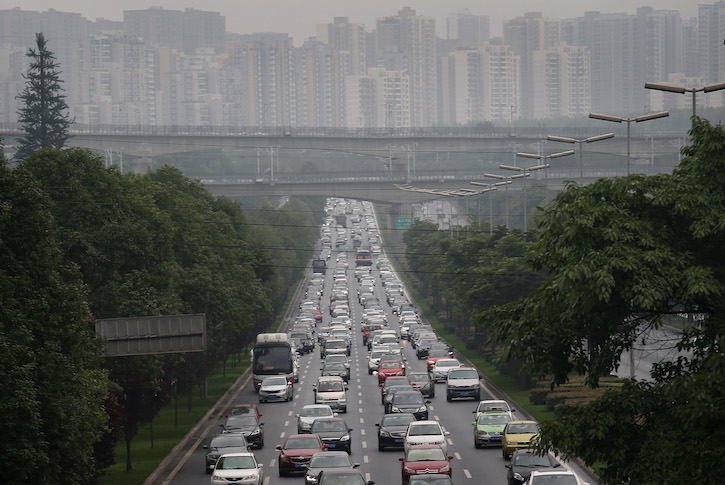
By Houze Song
Contrary to conventional wisdom, fiscal reform is one of the few bright spots in China’s ongoing comprehensive reform. To limit local governments’ ballooning debt and off-budget borrowing, Beijing has issued a series of policy documents and revised its budget law. Beginning this year, local governments’ borrowing will be subject to mandatory caps. That’s the good news. But without addressing local governments’ excessive investment, the reform measures will have a limited effect in controlling imprudent local government investment—and thereby, the growth of government debt.
The root cause of China’s local governments’ debt problem is investment spending. According to China’s Finance Ministry, more than 70% of existing local government debt is used to finance varies types of investments, including infrastructure and land development. Less than 20% of local government borrowing is actually spent on public services or welfare programs.
A certain level of fiscal investment is justified, of course, since China is still in the urbanization process. But the fundamentals do not support infrastructure investment at a rate that is much higher than economic growth. Over the past decade, the annual growth rate of the urban population has declined from more than 4% to less than 3%. In fact, the 13th Five Year Plan is targeting a growth rate of less than 2%, way below the average of the previous decade. In addition, overall economic growth is also beginning to slow down, which means less new infrastructure investment is needed. Besides, China has other options, such as policy banks and SOEs, to fund infrastructure investment, making the possibility of underinvestment in infrastructure less likely.
China’s local governments’ investment is also driven by distorted incentives that lead to over- rather than under-investment. The central government has been actively encouraging local governments to pursue high economic growth, which has been an important source of political legitimacy. Compared to private investment or consumption, government investment is the easiest way to create growth quickly. And so as a result of longstanding incentive structures, local officials enjoy both legal (promotion, job creation, fiscal revenue and etc.) and illegal benefits from promoting government investment. Since both central and local governments strongly favor investment, there is an inherent tendency to over-invest. As long as the incentives to invest still exist, it is hard to see how any policy could succeed in controlling government borrowing and debt.
As the economy has begun to falter, there are clear signs that Beijing has doubled down on its growth agenda. As a result, the need to fund investment is forcing local governments to invent ever more risky forms of investment vehicles—i.e., to leverage up—to maximize the growth impact of their investment.
The problem is further amplified by moral hazard—i.e., the assumption that debts don’t need to be paid back. Local governments often seek co-investment from private “equity” investors, who actually enjoy implicit government guarantees on return, while the government shoulders all the downside. Therefore, although local governments now seem to be subject to strict debt caps, the risk-adjusted government exposure has not actually been significantly reduced.
This can be shown through a simple example. Assume there is a need to fund a 1 billion yuan highway project. Previously, the local government would contribute 20% of the funding and borrow the rest. Now, the rest of the money comes from private capital that will be paid back before the government’s investment. Assume this project eventually loses 100 million. Though the government debt looks smaller under this arrangement, the government’s financial burden is actually the same as if it had been taking loans. In other words, local governments’ pursuit of riskier investments will offset any potential positive effect of the new debt cap.
This simple example can be applied to the overall structure of local governments’ debt. Even assuming the debt cap is binding, the borrowing will be invested in more risky ways. Therefore, the non-performing ratio of local governments’ debt will become higher. Eventually, this will make investors demand higher interest on local government bonds, making it more expensive for local governments to service their debt.
The cost of all these imprudent investments and growing local debt is ultimately carried by local citizens, through higher tax and lower public services. Ultimately, the public should have the authority to veto major public investment. Some form of public participation —a U.S.-style referendum system, for example—may be necessary to check wasteful investments by local governments and make sure that only projects that benefit the majority gets funding.
In the meantime, the bottom line is that whenever an existing growth driver is gone, the economy will almost always experience some transitional pain. And so it should be expected that local fiscal reform will be accompanied by a period of slower growth. Beijing should not expect local governments to deliver investment-driven growth and achieve fiscal sustainability at the same time. One has to go away, and hopefully it will be investment.
[contentblock id=24]




